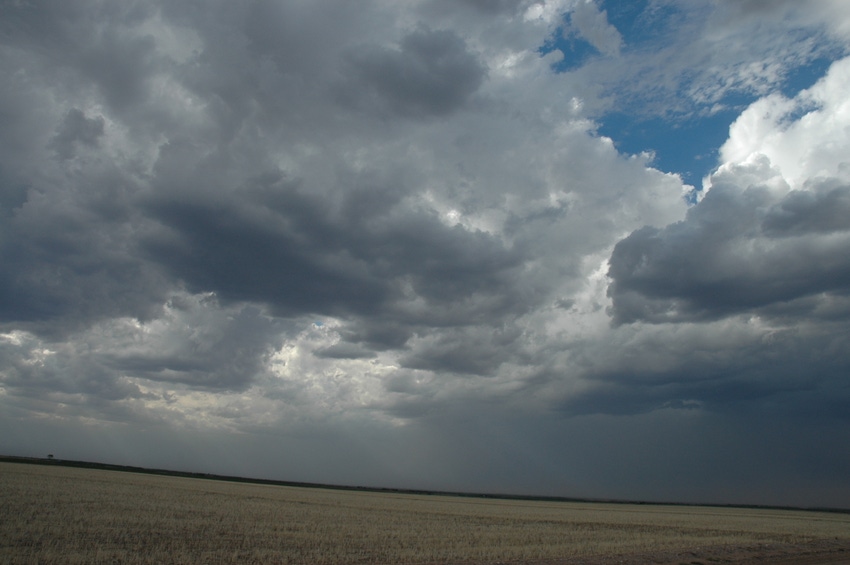
About an hour west of Fort Worth, Texas, after exiting I-20 and heading southwest on 206 at Cisco, through Cross Plains and towards Coleman, a dark cloud began to edge into view to the northwest. The farther west I drove, the darker, the more ominous and the more likely to contain rain it appeared.
It began as a dark patch on the northwest horizon. By the time I reached Coleman and headed more westerly, the patch seemed to be growing larger and darker. I stopped at a graveled entryway into a pasture to photograph the dark sky, careful to keep my truck away from dry grass. “Reporter starts wildfire” is a headline I don’t want to read.
The storm, if storm it was, still seemed to be far off.
I watched as I drove toward Ballinger and stopped several times as photo ops presented themselves.
I saw a flash or two of lightening and thought the storm clouds might herald an end to the drought that has plagued this part of the word for more than a year. The clouds grew darker and, in a less droughty time, might have seemed sinister.
They just looked promising.
I framed one shot against a mesquite bush to highlight the light green foliage against the black sky. I shot one with an empty, dust-filled rain gauge in the foreground; it, too, seemed to be waiting for rain.
Nearer San Angelo, wheat stubble stood in stark contrast to the thunderheads that now filled the horizon and moved closer and faster to the south and east. A few dust devils pirouetted at the far side of a field. I hurried on toward San Angelo.
The sky was black at the core with fringes of gray and silver on the cusp where sunlight filtered through. Shimmering tendrils of light slanted down from the main clouds. This could be a rainmaker, I thought. The wind was picking up.
On the outskirts of San Angelo, dust began to blow across bare fields—recently tilled and prepared to accept wheat seed if rain falls soon enough. The wind picked up and soon swept sheets of dust and sand across the new-tilled earth. Trees across the way appeared to be just clumps of something indistinguishable, lost in the fog.
No rain fell in San Angelo. Reports from farmers at a field day the following morning indicated some areas to the north and east received as much as one-inch of rain, better than nothing but far less than what appeared possible the afternoon before.
Field day organizers had also watched progress of the storm and wondered about a plan B if the morning was wet. It would have been a dilemma they would have enjoyed dealing with, they said.
About the Author(s)
You May Also Like






